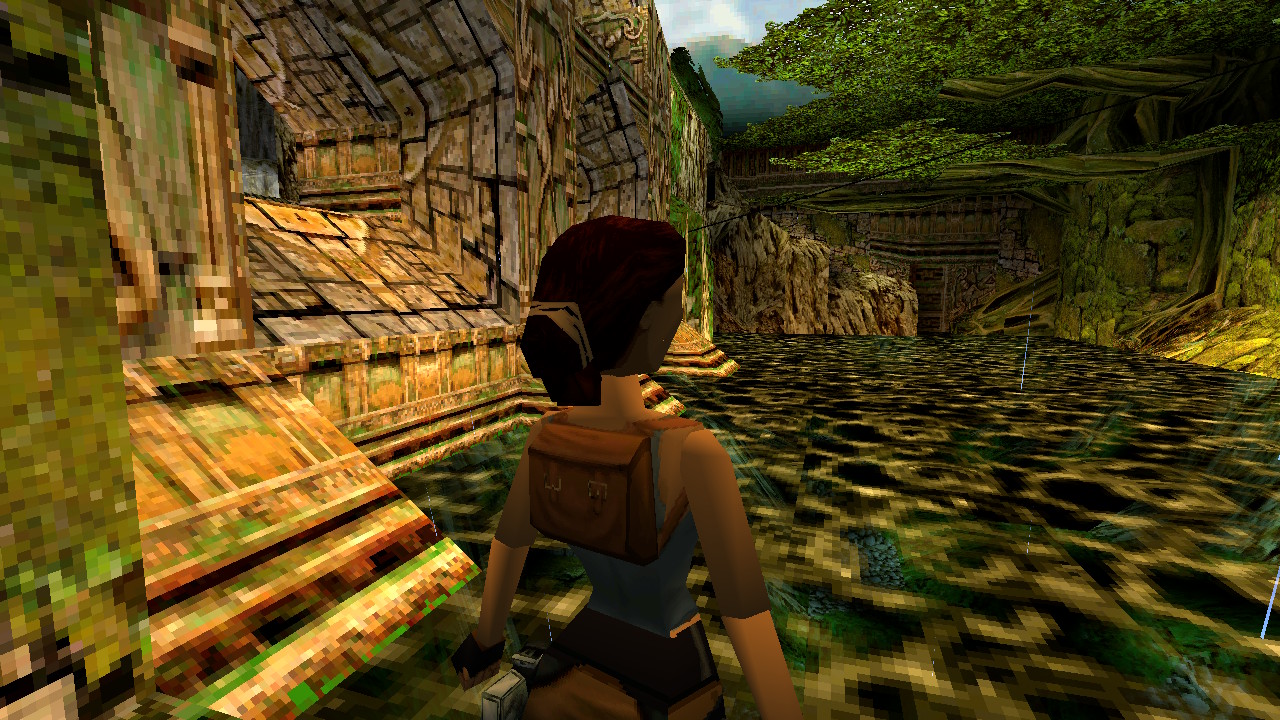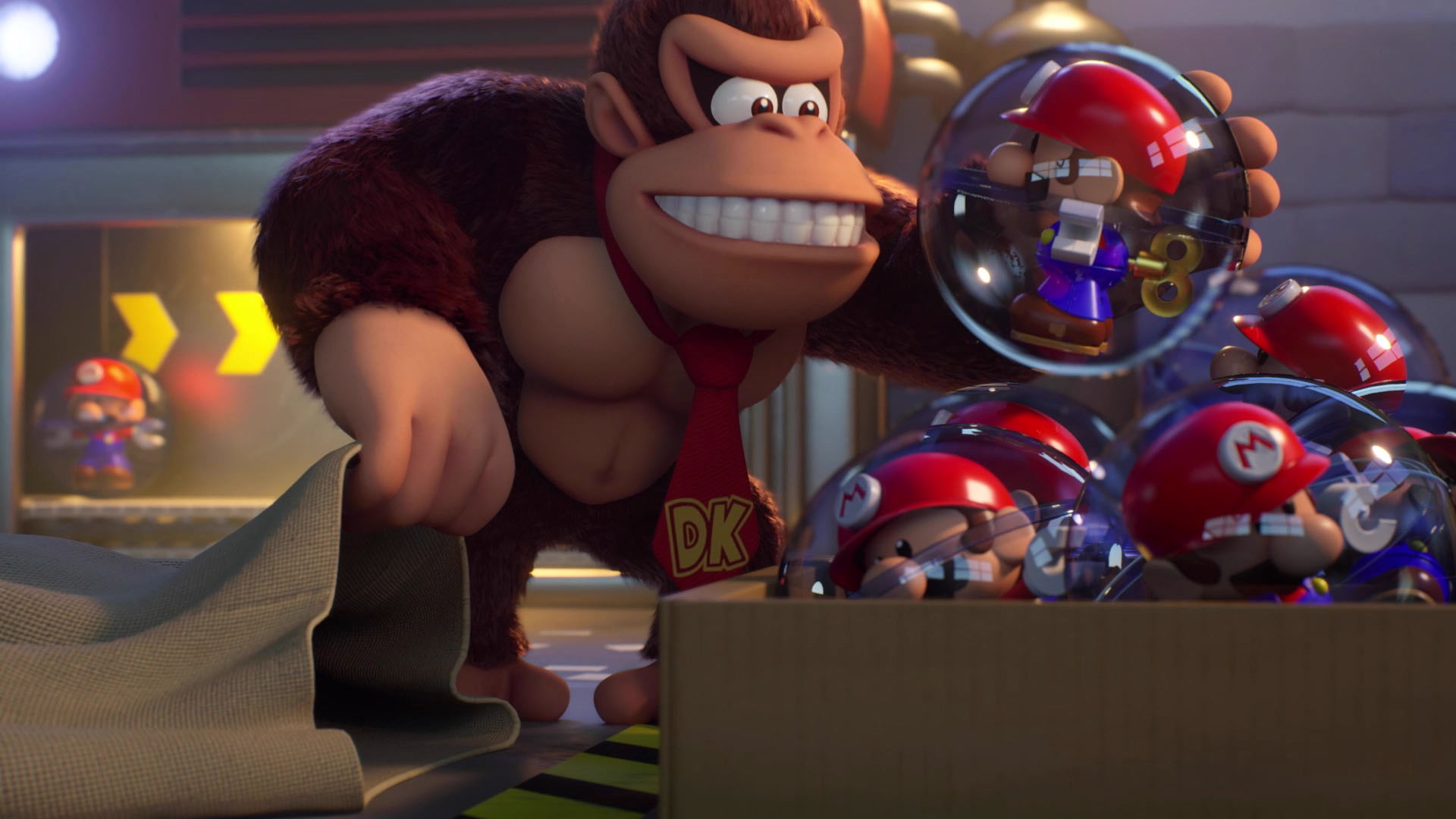My only experience of Tomb Raider (before the reboot) was a demo of the first game. I’m about to show my age here, but remember gaming magazines that had demo discs you could load up and play? One of those had a snip of Tomb Raider 1 to play. I didn’t care for it much and so never got into the early era of the series (aside from a GBA game that I reviewed once and quite enjoyed). But these games are obviously important to the history and heritage of video games, so I went along and picked myself up a copy of Tomb Raider I-III Remastered.
I still don’t care for it much.
The thing about Tomb Raider is that the discussion of the character has always overshadowed any discussion about the game. Lara Croft is, depending on your perspective, one of two things: Either she’s famous for being a pioneer of female video game icons, back at a time when male leads were overwhelmingly the default.
Or she’s infamous for being an early pioneer of sexualisation in video games, back at a time when 3D was finally evolving to a point that it could appear on consoles and that meant “realistic” looking characters rather than fuzzy sprites. I know it’s hard to imagine today, but those very triangular boobs that the original Lara Croft had, and the tiny shorts followed by cubic thighs, was once considered dangerously titillating to the puritanical edges of society.
For others, it inspired a kind of leery, pervy fascination. I distinctly remember reading a lengthy analysis in the arts section of one of Australia’s newspapers (yes, yes, I’m an older Millennial, remember), where the author saw in Lara Croft a transformative vision for the arts, where in the future directors and producers of films, television and so on wouldn’t need to negotiate with female actors and their agents, because digital celebrities were here and it was free to make them take their clothes off.
I’m greatly paraphrasing there, because while I remember the overall line of argument of the article, we are talking about something I read literally decades ago now. It stuck with me, though, because at the time I was impressed that Lara Croft was bringing video games into serious (if via a bit of a creepy pathway) art criticism. It was a major feature in the serious cultural pages of a major newspaper, after all.
And it turns out that the author’s sentiment was pretty accurate anyway.
The point is that in all of that, until the reboot came along, people didn’t really talk about the Tomb Raider games. With good reason. Even back then Lara’s tank controls were frustrating to grapple with, particularly when you throw in an early-era free-moving camera that often refused to behave. Younger players won’t know what “tank controls” are, and I’ll be fascinated to see how they get along with them if they play Tomb Raider Remaster, because they really are a relic of the past best forgotten. But those tank controls did allow for movement in three dimensions back when analogue sticks weren’t standardised.
In Tomb Raider, those tank controls were paired up with platforming that sometimes required pretty precision accuracy, and sluggish responsiveness (particularly with regards to jumping) that made the frequent platforming and exploration bits a massive headache.
The greatest strength of Tomb Raider was its combat, and the great irony is that the developers added a “modern controls” option that actually made the game even less playable. Modern controls make it vaguely easier to wander about, because we’re all used to having full analogue control over movement now, but that doen’t solve the problems with the sluggish responsiveness and camera issues, so it doesn’t make the game any easier to play. Meanwhile, you lose the ability to easily strafe, which was critical to being able to gun down the various enemies that Lara battled with.
In short, “tank controls” are still the way to go. It will be enormously frustrating and even infuriating, but as you get more used to it, you’ll find it easier to make progress than the modern controls option.
What is incredibly impressive about Tomb Raider I-III Remastered is the approach the developers have taken to the visuals, while also preserving the original vision. It’s possible to switch between the original graphics and a total remake on the fly with a single press of a button. The remade art is incredible in its level of detail – there are even subtle atmospheric effects, and now Lara’s boobs and legs are rounded! That upgrade isn’t just so the developers can show off, either. It does make some parts of the games easier to see and navigate through. This is how all remasters of older games should be handled. We can hardly appreciate the historical qualities of them if we can’t see them as they were originally intended. But when we’re just in the mood to play, it’s nice to have something that looks modern and slick, too.
It’s difficult to recommend Tomb Raider I-III Remastered as a thing that people should play. The games in the collection – especially the first one – are classics, though they’re not classics for the way they pushed gameplay or storytelling forward. They’re quite deficient in these areas. Tomb Raider is a classic because it helped redefine the nature of what a digital character could be. Sure, we had Mario and the Final Fantasy characters well before Tomb Raider, but those were closer to mascots. In Lara Croft we had a kind of human-proxy superstar for the first time. To many people, the gameplay didn’t matter. Not when rumours were spreading of nude codes for this new superstar.
And I suppose that for different reasons the gameplay still doesn’t matter. Whether you’ll enjoy this collection depends on whether you’re able to appreciate the time and place that it’s from.
(Note: there are not and have never been nude codes, and that applies to this Remaster too)
















Tomb Raider is definitely something you have to work at to “get”, but once you do it becomes very clear why it was designed the way it was.
Those tank controls are key to the game’s mechanical design. The first three games are all designed on a 3D grid. It’s very obvious in the first two, and they did a better job of hiding it in III, but it’s still there. Everything Lara does relates to that grid. Jump forward from a standing start? You’ll clear one block on the grid. Jump up? You can reach a ledge that is one block above Lara. Take a running jump? You can clear two blocks.
At heart, it’s very similar to how Prince of Persia was designed (if you look at the original versions of that, you’ll see everything relates to the floor tiles in the same way as Tomb Raider’s grid) — once you understand, in an almost mathematical sense, what Lara is capable of, all the Tomb Raider games become significantly more enjoyable… although it is also at that point you will probably also determine that combat is actually the *worst* part of all the games by a significant margin!
It’s like the review author must push a narrative about female characters in videogames and hates that this one did not come from Japan.
I can assure you that that’s not the case. And I don’t know what “narrative” you think I’m pushing about female characters in videogames, but I assure you that it’s not the case at all. I like Lara Croft as a character.
I don’t know what “agenda” you think Matt has here, and I’ve seen you around in the comments section here often enough to think you should probably know better than to suggest that.
All he’s saying are straight facts — Lara *has* been both celebrated and criticised in her lifetime, often at the same time by different groups! That’s nothing whatsoever to do with her country of origin or the people who created her.
That’s a really surprising review coming off of a video review praising original Tomb Raider’s grid platforming design and how they put emphasis on precision rather than speed while complaining about the combat part being meh and getting in the way. I also remember playing that demo and liking the Croft Manor part because you didn’t have to worry about shooting things. Though I’m not a fan of the series either.
At least it’s a reminder that non-Asian games were allowed to have attractive female characters in the past.